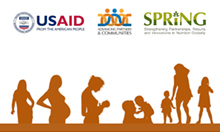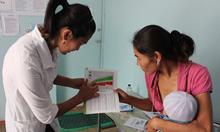Despite the fact that there is a global consensus on actions that are essential to address undernutrition, the workforce to promote those actions is often insufficient and unqualified for the task. Realizing the gravity of the undernutrition problem, USAID’s Multi-Sectoral Nutrition Strategy 2014-25; has prioritized increasing the number of formally trained professional and frontline workers in nutrition as two of its high impact actions.
Understanding the availability, spread, capacity, and role of the nutrition workforce is an essential step to implement and scale up nutrition programs. With this in mind, SPRING developed a simple, easy-to-use tool for mapping nutrition workforce and tested it in Haiti. SPRING then reviewed, revised, and expanded the tool into a Nutrition Workforce Mapping Toolkit, including a user’s guide, data collection forms, data entry forms, and illustrative tables for reporting findings. The purpose of the mapping exercise is to collect data on nutrition-specific actions performed by health workers at different levels with the health care service-delivery system. Data that are gathered include nutrition workforce size, composition, qualification, availability, gaps, and training status within different levels of the health facility. The toolkit then guides stakeholders in the development of tables and graphs which can be used for identifying training gaps related to nutrition-specific actions, improving planning and delivery of those actions, strengthening design and delivery of competency-based training programs; and advocating for nutrition workforce recruitment, deployment, and capacity-building.


